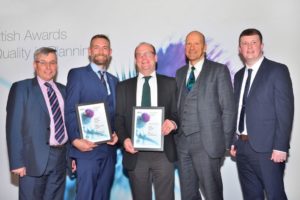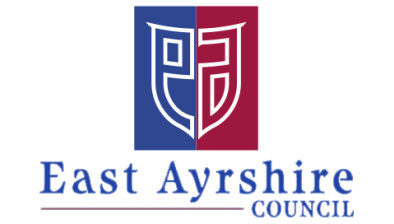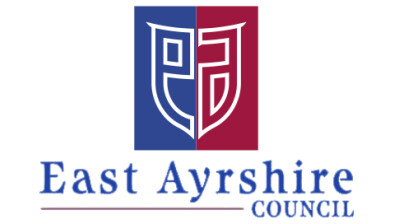East Ayrshire Council wins two planning awards

Karl Doroszenko, Scott Shanks, John Semple,
Michael Keane and Kieran Wardrop
Members of East Ayrshire Council’s Planning and Economic Development Service and Vibrant Communities teams were celebrating after two of their projects picked up top awards at the Scottish Awards for Quality in Planning annual ceremony.
Shortlisted for two of five categories, Plans and Partnership, the teams came out top with prizes for their work in two areas, the East Ayrshire Coalfields Initiative and Placemaking Plans.
Regeneration project officer John Semple, community worker Kieran Wardrop and John Sharp of Newmilns Regeneration Association picked up the Plans Award for their innovative work in developing Placemaking Plans for communities across East Ayrshire.
Placemaking Plans bring together planners, communities and individuals to look at preferred and practical solutions for improvement of towns, villages and communities, looking at issues such as transport networks, derelict buildings, green space, parking and opportunities for leisure and community activities.
Using a programme of formal and informal meetings, events and consultations communities are empowered to have a big influence on future decision making and funding opportunities for local improvements.
Once the process is complete, each community has a Placemaking Plan and Map which informs the local priorities for improvements becoming part of planning policy as guidance to the Local Development Plan.
East Ayrshire has led the way in Scotland in developing its Placemaking processes, with three plans now complete and another five in progress.
Daisy Whytock, Scott Shanks and Karl Doroszenko also triumphed, picking up the Partnership Award for their work with East Ayrshire Coalfields Initiative. With their partners and a squad of enthusiastic local volunteers, they have managed to achieve the restoration of 741 hectares of peatland within the coalfield area.
The volunteers have been trained to assist with site monitoring. They have acquired skills in plant identification and use of tools alongside the health and social benefits gained from volunteering outdoors.
By making sure that the habitat quality and hydrology have been improved the team has helped reduce the flood risk in the area, contained millions of tonnes of peatland carbon and improved the water quality in local rivers, habitat quality and connectivity, to protect what is an internationally important area for biodiversity.








